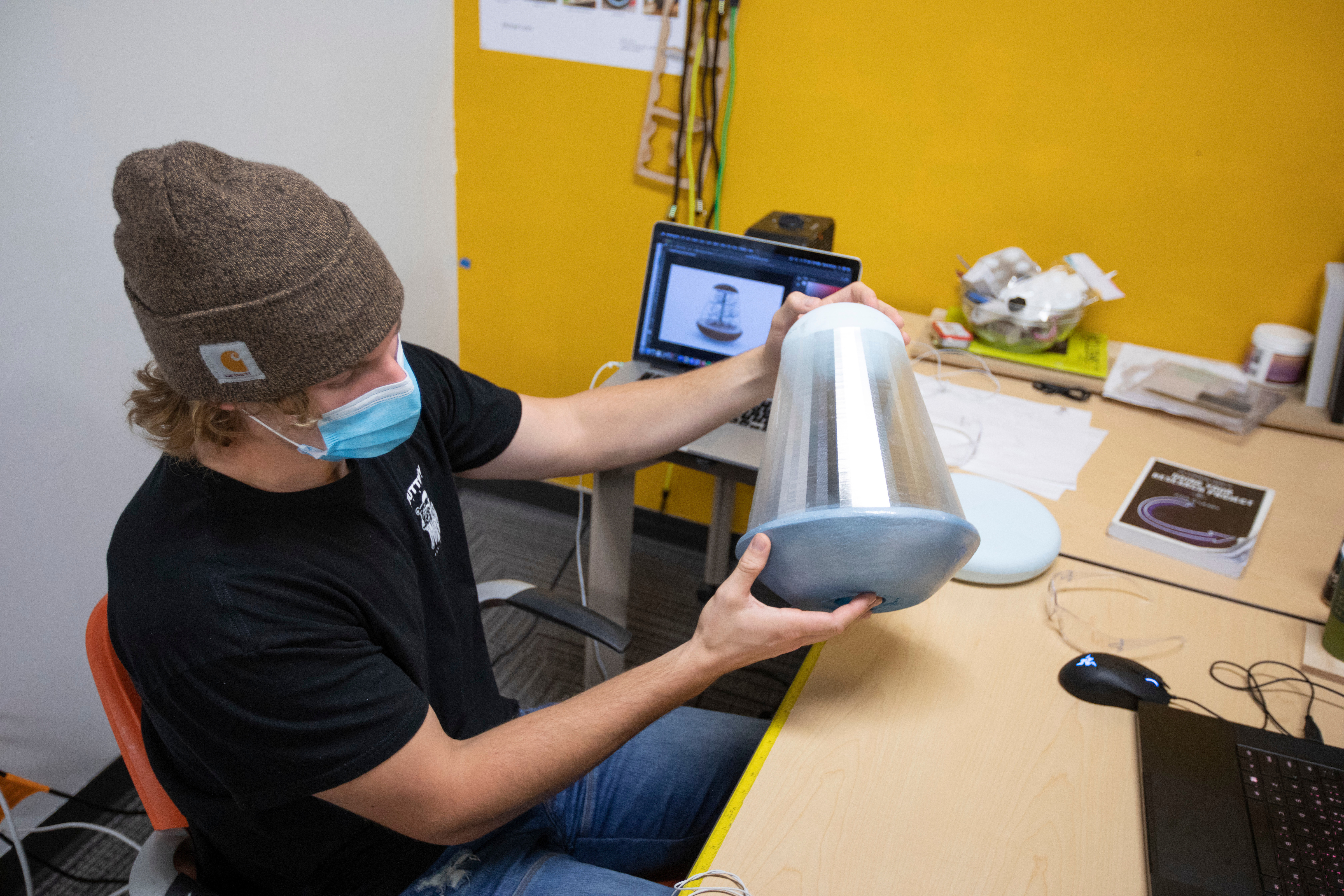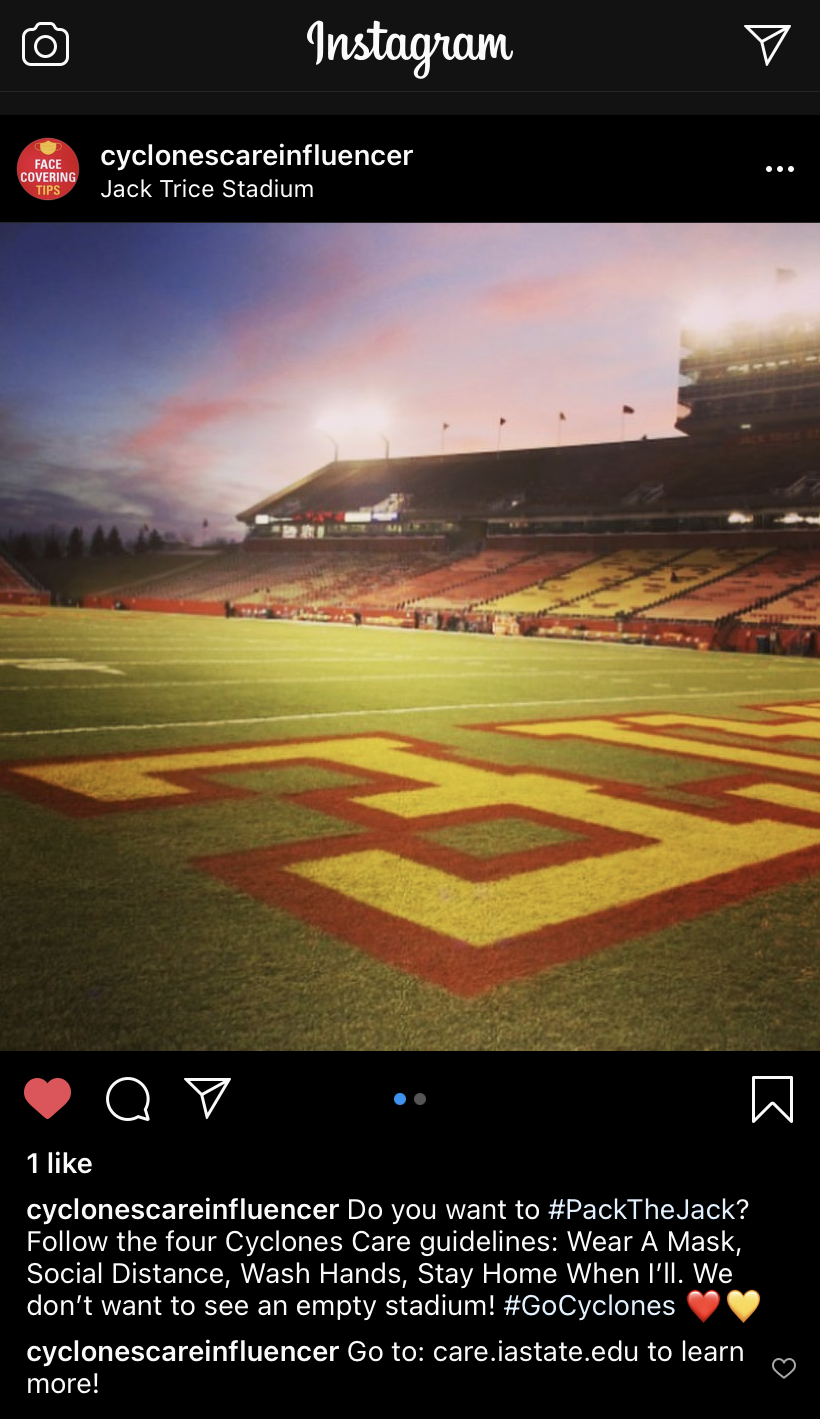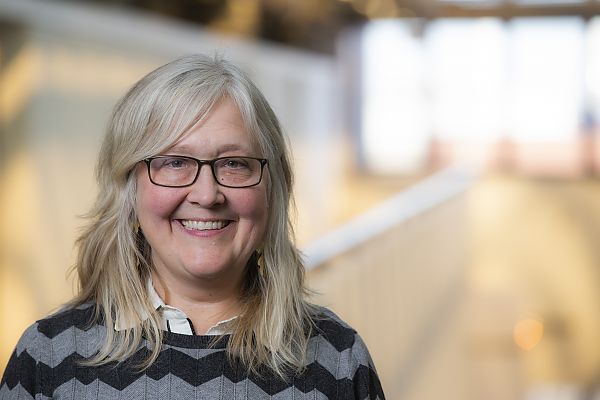
Industrial design graduate student Michael Luhrs is designing a face covering sanitizer/steamer unit in his Design 501/601 studio inside the Armory. Photo by Christopher Gannon. .
AMES, Iowa — As Iowa State University’s fall courses adjusted due to the COVID-19 pandemic, faculty across campus found ways to bring real-time, real-world issues into the classroom – wherever that may be.
Face coverings have been an obvious study for college students nationwide. Reinaldo Correa, assistant teaching professor of , and Carlos Cardoso, associate professor of , challenged their industrial design students to revisit this problem in critical and creative ways.
“We as a department came to this realization of: When we come back for the fall semester, we’re not coming back to what we consider the norm,” Correa said. “We’ve been hearing time after time that we’re truly living in a new normal, so to start with the premise of designing our typical day-to-day products might not be the best approach this time around.”
Instead, their students are looking into emerging problems through research and design that have led to their current project: building prototypes for “rethinking the mask.” Next, they will consider “reimagining social distancing.”
The studio’s 10 industrial design graduate students are each taking the project in a different direction. Pinar Adanir, from Bornova, Turkey, noticed her dentist wore a face shield and two to three N95 masks at once. To solve that cumbersome set-up, she’s creating a “mask-shield”: a two-in-one face shield and mask she will soon share with local doctors and dentists for user feedback.
Ryan Fransen, from Dubuque, was puzzled as to why some refuse to wear face coverings. He headed to Ada Hayden Heritage Park in Ames to interview people not wearing masks and learn about their reasoning. Now, he’s researching how non-invasive far-UVC light and filtered air could be combined to create a wearable or portable device that’s more comfortable to use than what’s available while still being protective.
After continually seeing face masks disposed in large quantities, Michael Luhrs, from Okoboji, is working on a device that sanitizes masks so they can be safely reused and reduce littering.

Public relations sophomore Justin Farrell
brainstormed ways in which to use Iowa
State’s “Cyclones Care” campaign to
encourage healthy behaviors. Photo provided.
Bringing ‘Cyclones Care’ into the classroom
Every year, Beth Haag’s students take on a real public relations campaign for their class project. What better option this semester than their own university’s “Cyclones Care” campaign?
Haag, assistant teaching professor in the , took this same course at Iowa State 30 years ago – but it didn’t resonate. Now that she’s teaching the course, Haag understands that’s because the project didn’t feel “real” enough.
“So, I started looking for people who needed public relations campaigns,” Haag said.
Her students have worked with Special Olympics, Johnston Community School District, ISU First Amendment Days and more. Wandering around Ames this summer, Haag started seeing posters and flyers with the Cyclones Care messaging.
Each student team has to come up with a target audience for their campaigns. They’re targeting Trend magazine readers (wearing a face covering can be fashionable), intramural sports (to have these activities you need to wear a face covering), off-campus residents, sororities and fraternities, and the senior class.
“They know these audiences better than anyone else because they’re their peers,” Haag said. “They have an opportunity to make a difference, especially within their age group.”
Weaving social justice into city planning
As Jane Rongerude started preparing for her fall course, “Social Justice in Planning,” she saw a message from Kareem Usher, assistant professor of at The Ohio State University. He was teaching a similar course and because the pandemic forced his class to look different this fall, he wanted to find new ways to collaborate.

Jane Rongerude
Rongerude, associate professor of at Iowa State, suggested that their classes work together since her course is partially in-person and partially online.
“Both of us were coming from a place where we wanted this class to respond to the current moment,” Rongerude said. “How can we, as planners and educators, focus on racial equity and social justice in planning?”
Rongerude’s students are working with community partners to apply what they’re learning. One project is with Jordan Brooks, multicultural liaison officer in the College of Design, to create a diversity, equity and inclusion curriculum so that the can travel across campus and engage with more students at Iowa State.
Another project is partnering with the city of Des Moines on its equity plan process. Students will work with the city to engage with youth around their visions of an equitable city. Their work will help the city better understand the perspectives of local youth and identify next steps to address inequities in Des Moines.

Kareem Usher
“Young people are often left out of planning processes, yet they are the ones we will be looking toward to implement this work,” Rongerude said. “So many young people right now have a strong vision of justice. They want change, and cities that fail to listen will lose these same young people to cities that do listen. We need innovation. We need vision. We need energy. It’s time to listen to the young leaders in our communities and to connect them with the resources to do the work that needs to be done.”
Usher sees this cross-university collaboration as an opportunity to redefine higher education, as it eliminates issues of distance and funding.
“When we talk about race and racial justice, it seems like we’re all in silos in our departments and universities,” Usher said. “I see this as an opportunity to connect. This is affecting us nationally and internationally in real time. We need to meld ideas together and move in unison.”








